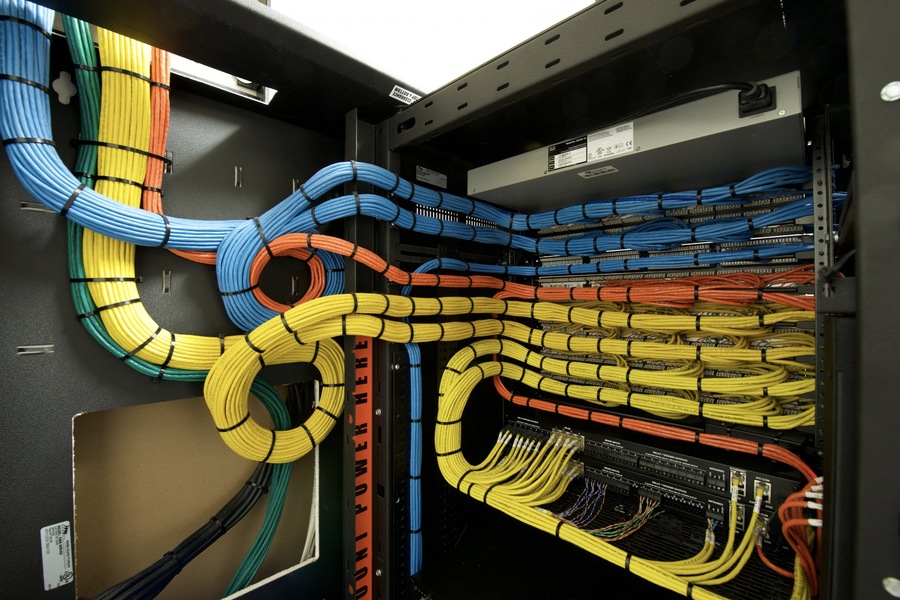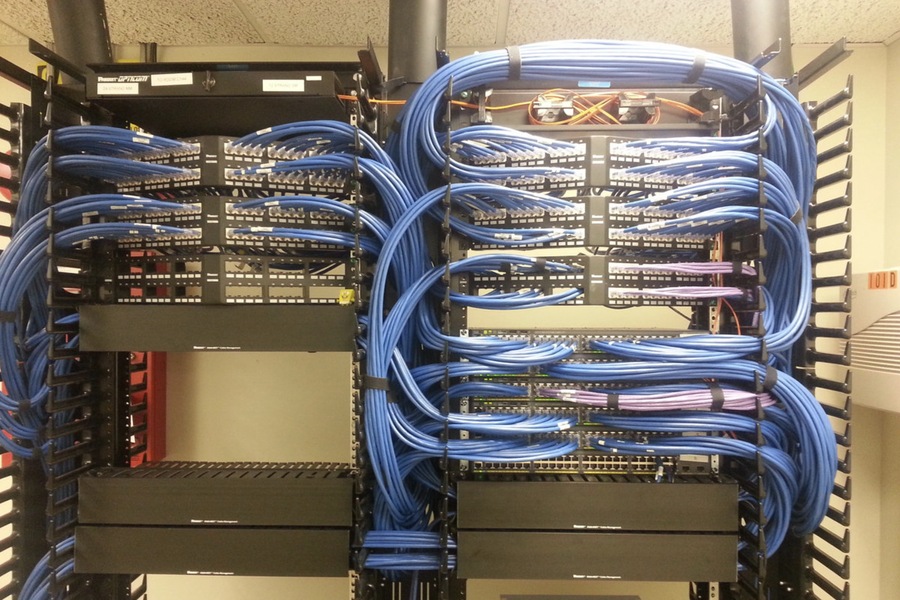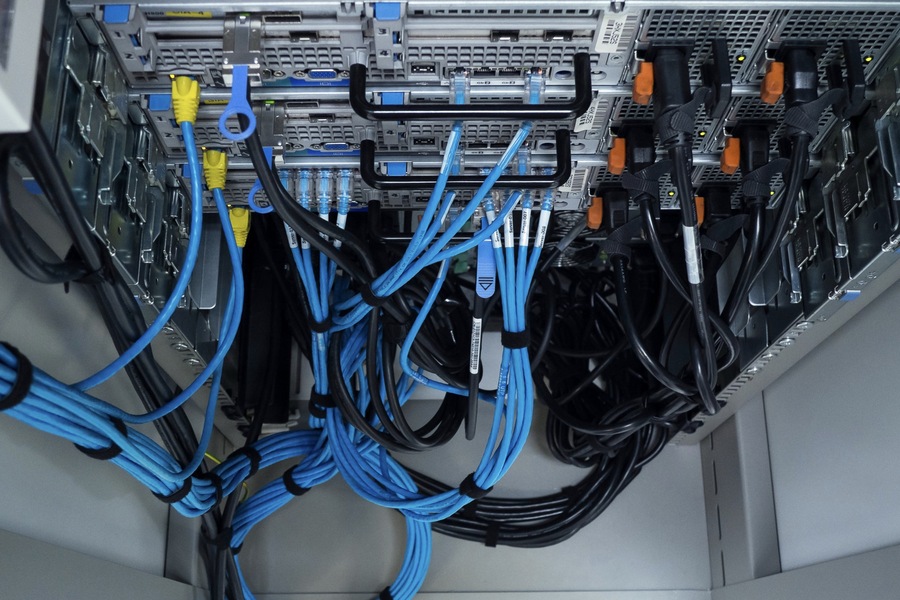In today’s technologically driven world, devices have become more compact, but the complexity of their interconnections has only increased. This is especially evident in high-functioning environments such as control rooms, data centers, offices, and even modern homes. Proper cable management is more than just tidying up wires—it is a systematized approach to organizing electrical and optical wires to optimize safety, enhance convenience, and ensure functionality. Trusted providers like BonnGulf offer comprehensive solutions for efficient cable management, helping maintain order, ensure operational efficiency, and create an aesthetically pleasing space.
This article provides a detailed overview of the significance of cable management, explores its many benefits, discusses practical tools and techniques, and highlights professional solutions for those seeking expert assistance.
Page Content
The Core Objectives of Cable Management
At its heart, cable management focuses on three main objectives:
- Safety – Prevent accidents, minimize hazards, and protect sensitive equipment from damage caused by poorly arranged wires.
- Efficiency – Streamline cable layouts to simplify maintenance, improve access, and support operational workflows.
- Aesthetics – Create a clean, organized, and professional appearance in any workspace.
Achieving these goals requires a combination of thoughtful design, the right tools, and adherence to best practices.

Key Benefits of Cable Management
- Enhanced Safety
Unmanaged cables pose significant risks. Tripping hazards, accidental disconnections, and electrical shorts are just a few examples of how disorganized cabling can lead to accidents and equipment damage. These risks are amplified in environments such as control rooms, where continuity of operations is vital.
Proper cable management can:
→Reduce the likelihood of accidents caused by tripping over loose cables.
→Prevent disconnections that could lead to downtime or equipment malfunctions.
→Protect cables from external damage, such as compression, abrasion, or exposure to moisture.
In workplaces where sensitive equipment is in use, safeguarding cables also ensures long-term reliability and prevents costly repairs.
- Improved Practicality and Functionality
Managing cables efficiently simplifies daily operations. Devices become easier to connect and disconnect, troubleshooting becomes faster, and overall workspace cleanliness improves.
Some key practical benefits include:
Simplified Cleaning: Organized cables allow for easier access to floors and surfaces, making cleaning faster and more thorough
Ease of Maintenance: Labeling cables and routing them through designated channels ensures that technicians can quickly identify and address any issues.
Optimized Power Management: Integrating retractable sockets, USB hubs, and cable docks streamlines access to power sources and reduces clutter.
By reducing the effort required to manage cables, users save valuable time and reduce frustration in day-to-day activities.
- Enhanced Ergonomics
Ergonomics is critical for creating a workspace that promotes productivity and reduces physical strain. Disorganized cables can lead to cluttered desks, tangled wires, and wasted time searching for specific connections. Proper cable management addresses these issues by:
→Ensuring devices and connections are within easy reach.
→Eliminating distractions caused by visible or dangling cables.
→Reducing unnecessary movements or adjustments to access cables or ports.
In control rooms or office environments, this translates to increased focus, reduced fatigue, and higher overall efficiency.
- Improved Aesthetics
A clean, organized workspace is not just visually appealing—it also fosters a sense of professionalism and order. Tangled or exposed wires can give the impression of disorganization and inefficiency, whereas neatly arranged cables create a polished and professional look.
Aesthetic cable management is especially important in:
→Client-facing environments where first impressions matter.
→Open office layouts where visible clutter can affect team morale.
→High-tech facilities where an organized appearance reflects the company’s commitment to excellence.
Strategies for Effective Cable Management
Achieving proper cable management requires planning, the right tools, and adherence to specific techniques. Here are some practical strategies:
- Use Cable Channels and Trays
Cable trays and channels are essential for organizing and protecting cables. These can be installed under desks, along walls, or even integrated into furniture designs. Channels and trays provide a clear path for wires, reducing tangling and allowing for future adjustments.
- Adopt Color-Coding and Labeling
Color-coding cables and using labels can make it much easier to identify specific connections. This is particularly useful in complex setups, such as server rooms or control centers, where numerous cables need to be distinguished quickly.
- Implement Modular Power Solutions
Modern workspaces benefit from modular power solutions, such as retractable sockets and integrated USB hubs. These systems reduce the number of visible wires and provide flexible access to power.
- Bundle Wires with Cable Ties or Velcro Straps
Bundling wires into manageable groups with cable ties or reusable Velcro straps helps minimize clutter. This approach is cost-effective, easy to implement, and ideal for setups with limited space.
- Invest in Cable Management Accessories
Accessories such as wire holders, clamps, and flexible channels can greatly enhance the organization of cables. These tools allow for secure attachment to surfaces and facilitate routing along desks, walls, or floors.

Top Cable Management Accessories
Here are some essential tools for effective cable organization:
- Wire Holders and Clamps
Wire holders and clamps help secure cables along surfaces, preventing them from dangling or tangling. These accessories can be mounted on horizontal or vertical surfaces and are perfect for directing cables along specific routes.
- Cable Channels (Horizontal, Vertical, and Flexible)
Cable channels conceal and protect wires, keeping them out of sight while ensuring easy access for adjustments. Flexible cable channels are particularly useful for dynamic setups, such as adjustable-height desks.
- Brackets
Brackets provide support for larger cable bundles and related equipment, such as power strips or routers. They are ideal for organizing workstations with multiple devices and connections.
Professional Cable Management Solutions
For large-scale projects or specialized environments, professional assistance is often the best approach. In the UAE, BonnGulf stands out as a trusted provider of cable management solutions. With extensive experience in the field, BonnGulf offers:
→Cable trays and supports for industrial and commercial use.
→Durable, hot-dip galvanized cable trays for long-term reliability.
→Flexible slotted ducts and fastening systems tailored to unique requirements.
BonnGulf specializes in delivering comprehensive solutions that enhance safety, functionality, and aesthetics in workspaces.
Conclusion
Cable management is a vital aspect of modern workspace design that goes beyond aesthetics to encompass safety, functionality, and productivity. From preventing accidents and simplifying maintenance to creating a more organized and professional environment, the benefits of proper cable management are manifold.
Whether you’re setting up a home office, optimizing a control room, or managing a large-scale facility, investing in high-quality cable management solutions is a decision that pays off in the long term. For tailored solutions and professional-grade accessories, companies like BonnGulf offer the expertise and products needed to achieve exceptional results.



